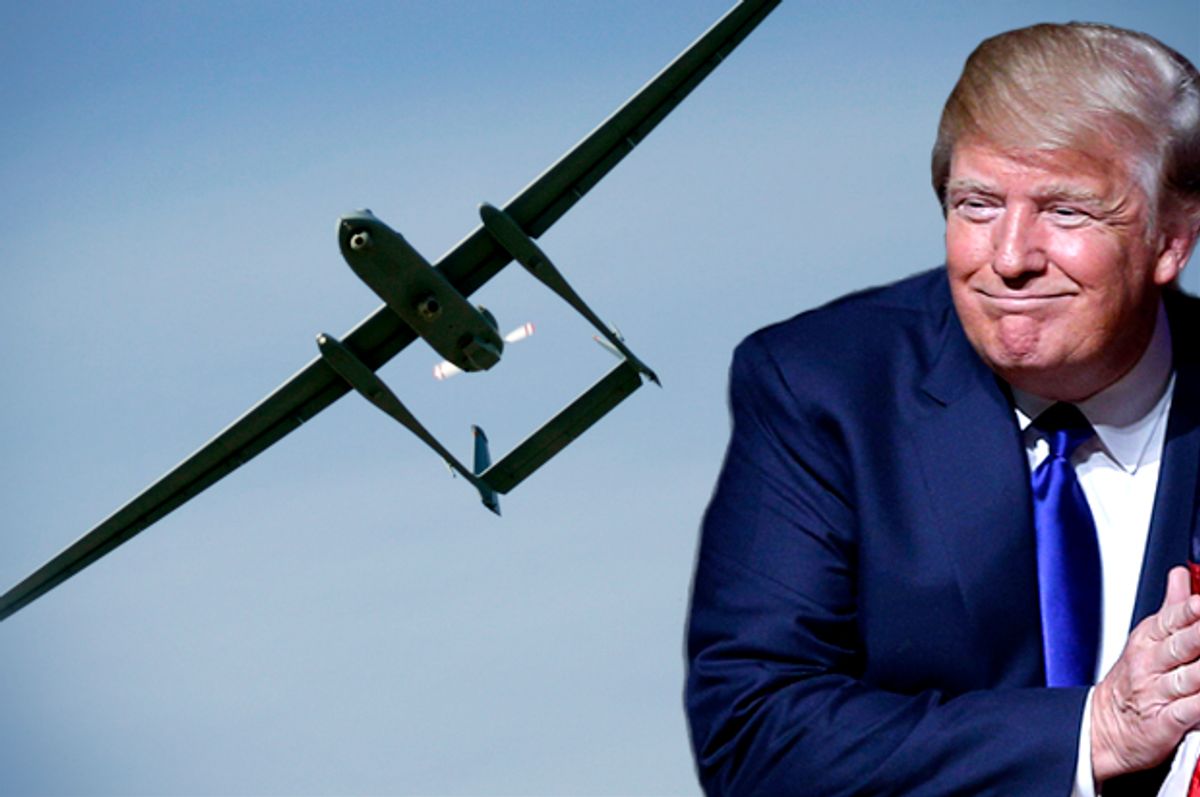President Donald Trump's administration intends to lift safeguard restrictions on U.S. drone strikes and military raids that take place outside conventional battlefields.
There are two key rules that the president's top national security advisers have proposed to relax, the New York Times reported. The targets of kill missions conducted by the military and the CIA has been "generally limited to high-level militants" that may pose a "continuing and imminent threat," a policy that was already problematic and has been criticized.
However Trump's national security advisers propose to lower the threshold for who can be targeted in kill missions, meaning targets could be "foot-soldier jihadists with no special skills or leadership roles," the Times reported.
The second proposal would be that drone strikes as well as raids no longer undergo a high-level vetting process.
Administration officials have however, decided it's important to keep in place a rule that requires "near certainty" civilians will not be killed, the Times reported. Though, in the past, civilians have been the victims of numerous drone strikes under the Obama administration.
The New York Times elaborated on the rule changes:
The proposal to overhaul the rules has quietly taken shape over months of debate among administration officials and awaits Mr. Trump’s expected signature. Despite the preservation of the protections for civilians, the other changes seemed likely to draw criticism from human rights groups.
The policy paves the way for broader and more frequent operations against Al Qaeda, the Islamic State and other jihadists. It would also apply in countries where the United States has targeted Islamist militants outside of regular combat for years, including Yemen, Somalia and Libya, and would ease the way to expanding such gray-zone acts of sporadic warfare to elsewhere in Africa, Asia and the Middle East where terrorists operate.
The use of drones under Obama is highly controversial, despite minimal public discourse. Killings of civilians have already skyrocketed under the Trump administration, and drones are known to have technological hindrances that often cause lethal mistakes.
"The Obama administration’s policy guidance on the use of lethal force was a positive step but fell far short on human rights protections," Zeke Johnson, senior director of programs for Amnesty International USA, told the Times. "Any decision to weaken those standards would be a grave mistake."



Shares